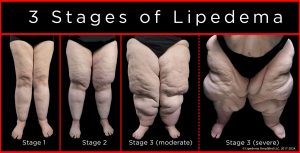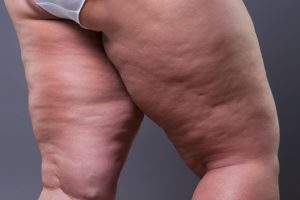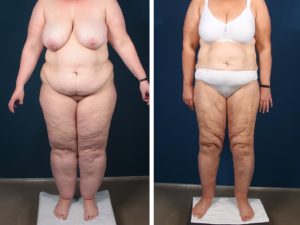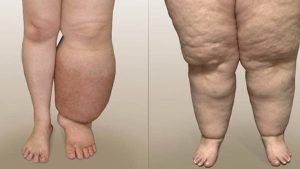
LIPEDEMA
Lipedema. Abnormal fat accumulation in the lower body is a long-term symptom of lipedema. Most typically, it affects your calves, thighs, and butt. It is found in the upper arms or hips of some people. Neither your hands nor your feet are impacted. Although these are two distinct illnesses, people can mistake lipedema for being overweight or having lymphedema. But lipedema can cause lymphedema. A lot of lipedema sufferers have body mass indices over 35.
LIPEDEMA
There is no cure for it, but there are treatments that can help you feel better. it is an abnormal buildup of fat on both sides of your lower body, usually in your legs, but it can also be in your arms. It can cause pain and make daily activities difficult, and it doesn’t respond to diet and exercise like regular fat.
Types

Type I: There is fat between your hips and belly button.
Type II: You have fat between your knees and pelvis.
Type III: You have fat between your ankles and pelvis.
Type IV: You have fat between your wrists and shoulders.
Type V: The area between your ankles and knees is fat.
Symptoms

Symptoms of lipedema include:
accumulation of fat on both sides of your body in the butt, thighs, calves, and even the upper arms.
Feelings of something beneath your skin, with bumps inside the fat.
Pain can range from minor to severe, and it can be constant or only occur when pressure is applied.
A sensation of weight on your legs.
Swelling.
skin prone to bruising.
weariness.
Causes
It’s precise cause is unknown. However, in 20% to 60% of cases, the illness runs in families, so you could inherit it. Nearly all cases of the illness are in women.
Given that lipedema typically begins or worsens during puberty, it may be related to hormones.
Pregnancy.
Menopause.
The period while you’re using hormone-containing birth control tablets.
Although it is not caused by obesity, over half of those who have it have a BMI of 35 or above.
Treatment

Exercise. Walking, riding, and swimming all contribute to increased mobility and decreased edema. Additionally, exercising in a pool helps lessen joint tension.
A diet that reduces inflammation.
a heart-healthy diet. If you become aware of it early on, this could help slow its progression. However, unlike other types of fat, lipedema is typically not eliminated by dieting.
In addition to reducing fat, liposuction can ease discomfort and improve mobility. Due to the lower risk of lymph vessel damage compared to traditional liposuction, providers advise wet-jet assisted liposuction.
If your BMI is over 35 and you have lipedema, your doctor might suggest bariatric surgery.
Prevention

Because it restricts your mobility, it is an abnormal accumulation of fat on both sides of your lower body, can be a challenging condition to live with. Speaking with others, even if it’s only in an online support group, can help you remember that you’re not alone in this. They and your healthcare physician are aware that lipedema is not the same as normal body fat.
Summary
Living with lipedema, an abnormal accumulation of fat on both sides of the lower body, can be challenging since it restricts your mobility. You can be reminded that others are also going through this by talking to others, even if it’s simply via an online support group. They are aware that lipedema is not the same as normal body fat, as is your healthcare physician.